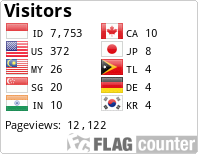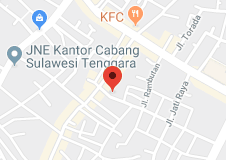UJI AKTIVITAS ANTIBAKTERI LENDIR BEKICOT (Achatina fulica) TERHADAP BAKTERI Staphylococcus epidermidis
DOI:
https://doi.org/10.46356/jakk.v4i1.172Keywords:
Bekicot, Lendir Bekicot, Achatina fulica, AntibakteriAbstract
ABSTRAK
Bekicot merupakan sumber protein yang berkualitas baik. Lendir bekicot mengandung zat
beta aglutinin sebagai antibodi di dalam plasma (serum), glikokonjugat, acharan sulfat dan protein
achasin sebagai peptida antibakteri. Penelitian ini bertujuan untuk mengetahui zona hambat serta
efektivitas lendir bekicot (Achatina fulica) pada pertumbuhan bakteri S. epidermidis. Jenis penelitian
yang digunakan adalah penelitian eksperimen yang terdiri atas lima perlakuan dan tiga kali
pengulangan. Sampel uji yang diteliti adalah lendir bekicot (Achatina fulica) yang dilarutkan dalam
aquadest hingga didapatkan varian konsentrasi 10%, 20%, dan 30%. Hasil penelitian menunjukkan
bahwa lendir bekicot menghambat pertumbuhan bakteri S. epidermidis masing-masing konsentrasi
10%, 20% dan 30% yakni 2,66 mm, 6,9 mm dan 7,6 mm. Berdasarkan uji Anova mendapatkan
hasil F hitung yaitu 37,16 lebih besar dibandingkan dengan F tabel 3,47 kemudian dilanjutkan
dengan uji BNT untuk mengetahui konsentrasi lendir bekicot (Achatina fulica) yang efektif dalam
menghambat pertumbuhan S. epidermidis. Berdasarkan hasil penelitian dapat disimpulkan bahwa
lendir bekicot (Achatina fulica) dapat menghambat pertumbuhan bakteri S. epidermidis. Dari hasil
uji Anova dan uji lanjutan BNT konsentrasi lendir bekicot yang lebih efektif dalam menghambat
pertumbuhan bakteri S. epidermidis yaitu pada konsentrasi 30%.
Kata Kunci : Bekicot, Lendir Bekicot, Achatina fulica, Antibakteri
ABSTRACT
Snails are the high quality source of protein. snail mucous contains beta-aglutinin as an
antibody in plasma (serum), glykokonjugate, acharan sulfate and achasin protein as antibacterial
peptide. This study aims to determine the inhibition zone and the effectiveness of snail mucous
(Achatina fulica) on the growth of S. Epidermidis bacteria. This examination used experimental
research consisting of five treatments and three repetitions. The samples test examined were snail
mucous (Achatina fulica) dissolved in aquadest to obtain the concentation variation of 10%, 20%
and 30%. The result of this examination shows that snail mucous inhibits the growth of S.
Epidermidis bacteria respectively concentrations of 10%, 20% and 30% are 2,66 mm, 6,9 mm dan
7,6 mm. Based on Anova test the researcher got the result of F count 37,16 is bigger than F table
3.47 then proceed with BNT test to know the concentration of the effective snail mucous (Achatina
fulica) to the growth of S. Epidermidis bacteria. Based on the result, it can be concluded that snail
mocous (Achatina fulica) can inhibit the growth of S. Epidermidis bacteria from the result of Anova
and then proceed with BNT test on snail mucous consentration is more effective in inhibiting the
growth of S. Epidermidis bacteria that is in concentration of 30 %.
Keywords : Snail, Snail Mucous, Achatina Fulica, Antibacterial.
Downloads
Published
Issue
Section
License
Authors who publish on JAKK can share their research in a number of ways. JAKK does not impose an embargo on published journals, meaning that researchers can access it openly after the article is published. Researchers who have subscribed to access to articles can also share.
JAKK already uses the Open Journal System (OJS) thereby enabling the final version of all published research articles to be placed in any digital archive immediately after publication. JAKK can automatically make feeds of open access articles available to any repository that wishes to receive them.
Authors who publish with this journal agree to the following terms:
* Authors retain copyright and grant the journal right of first publication, with licensed under a Creative Commons Attribution ShareAlike 4.0 International License (CC BY-SA 4.0) that allows others to share the work with an acknowledgement of the work's authorship and initial publication in this journal.
* Authors are able to enter into separate, additional contractual arrangements for the non-exclusive distribution of the journal's published version of the work (e.g., post it to an institutional repository or publish it in a book), with an acknowledgement of its initial publication in this journal.
* Authors are permitted and encouraged to post their work online (e.g., in institutional repositories or on their website) prior to and during the submission process, as it can lead to productive exchanges, as well as earlier and greater citation of published work.







2.jpg)

